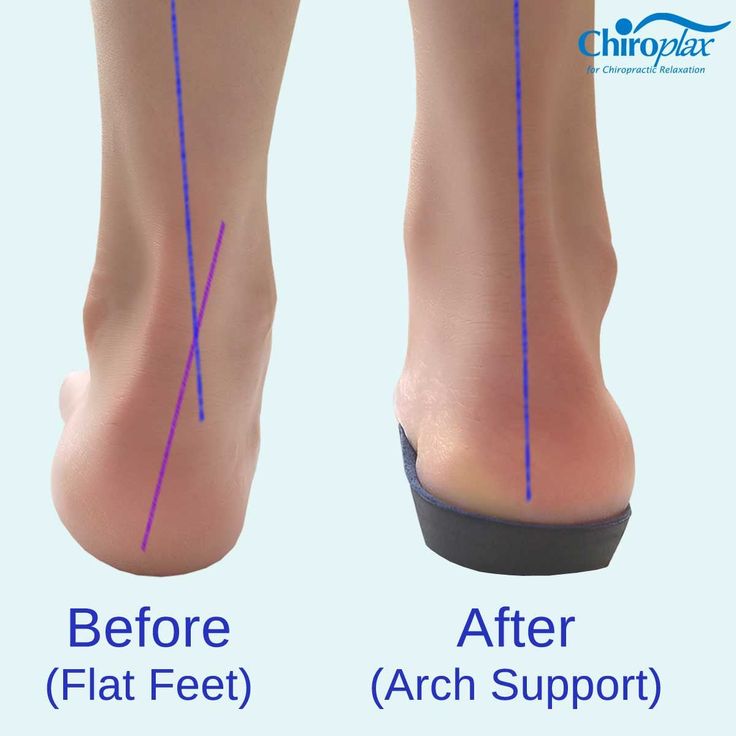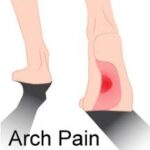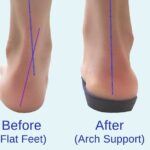Discover the ultimate guide on the Best Insoles for High Arch Support, providing essential information to enhance your foot health and comfort.
Article Outline
- Introduction to High Arch Support
- Understanding High Arches
- Importance of Proper Support
- Criteria for Selecting Insoles for High Arches
- Material Quality
- Arch Support Design
- Cushioning and Comfort
- Durability and Flexibility
- Top Insoles for High Arch Support
- Insole Brand 1: Features and Benefits
- Insole Brand 2: Features and Benefits
- Insole Brand 3: Features and Benefits
- User Experiences and Reviews
- Positive Feedback
- Considerations and Complaints
- Comparative Analysis
- Comparison with Regular Insoles
- Why Specialized Insoles Matter
- Usage Tips and Maintenance
- Proper Insertion Techniques
- Care and Maintenance Tips
- Where to Buy
- Online Stores
- Retail Outlets
- Price Range and Value for Money
- Budget Options
- Premium Choices
Introduction to High Arch Support
High arches, scientifically known as pes cavus, are a unique foot condition where the arches of the feet are raised more than usual. This condition affects a significant portion of the population and can lead to various foot problems if not properly managed. The arch of the foot is a critical structure that supports the weight of the body in all activities involving the feet, from standing to running. In those with high arches, this arch is more pronounced, creating a distinct gap between the sole of the foot and the ground.
The importance of proper support for high arches cannot be overstated. High arches can lead to an uneven distribution of weight across the foot, resulting in increased pressure on the heel and ball of the foot. This can cause various issues, such as pain, instability, and an increased risk of ankle sprains. Additionally, people with high arches often experience discomfort when wearing standard shoes, as these shoes may not provide adequate support to the arch area.
Proper support for high arches typically involves the use of specialized footwear or insoles designed to accommodate and support the heightened arch. These supportive devices help in distributing weight more evenly across the foot, reducing pressure on the heel and forefoot. They also contribute to stabilizing the foot, reducing the risk of ankle sprains and other injuries. Moreover, they can greatly enhance comfort while walking, running, or standing for extended periods.
Understanding the characteristics and implications of high arches is essential for selecting the right footwear and insoles. This understanding ensures that individuals with high arches can engage in daily activities comfortably and safely, minimizing the risk of foot-related problems.
Criteria for Selecting Insoles for High Arches
Selecting the right insoles for high arches is crucial for comfort and foot health. Here are key criteria to consider:
- Material Quality: The material of the insole impacts its comfort, durability, and effectiveness. Look for high-quality, resilient materials like memory foam, gel, or reinforced composites that offer both cushioning and support.
- Arch Support Design: The design of the arch support is paramount. Insoles for high arches should have a well-defined arch that aligns with the natural curve of your foot. This design helps in distributing pressure evenly across the foot, reducing stress on the arch.
- Cushioning and Comfort: Adequate cushioning in the insole is essential, especially in the heel and forefoot areas, to provide comfort and absorb impact. The insole should not be too soft, as it needs to maintain its shape to support the arch effectively.
- Durability and Flexibility: Durability is an important factor as insoles for high arches undergo significant stress. The insole should also have a degree of flexibility to allow natural foot movement while providing support.
- Size and Fit: Ensure the insole fits your shoe size and shape correctly. Poorly fitting insoles can be uncomfortable and ineffective. Some insoles are trimmable for a custom fit.
- Breathability and Moisture Management: Insoles should allow your feet to breathe and manage moisture effectively, preventing odor and maintaining a healthy foot environment.
- Compatibility with Footwear: Check whether the insoles are compatible with your existing footwear. Some insoles are designed for specific types of shoes, like athletic shoes, dress shoes, or boots.
- Specific Needs and Activities: Consider your specific needs, like the level of activity, types of surfaces you walk on, and any existing foot conditions. Some insoles are designed for specific activities, such as running, hiking, or standing for long periods.
- Expert Recommendations: Consult with a podiatrist or foot care specialist, especially if you have ongoing foot problems. They can recommend insoles that best suit your specific foot structure and needs.
- Brand Reputation and Reviews: Research brands and read user reviews to gauge the effectiveness and quality of different insoles. Personal experiences from other users with high arches can be insightful.
By carefully considering these criteria, you can select insoles that provide the necessary support and comfort for high arches, enhancing foot health and overall well-being.
Top Insoles for High Arch Support
When looking for the best insoles specifically designed for high arch support, several brands stand out, including a notable mention for Atlas Arch Support. Here are three top recommendations:
- Insole Brand 1: Atlas Biomechanics Arch Supports
- Features and Benefits: Atlas Arch Supports are known for their thermo-moldable design, allowing for a custom fit to the wearer’s foot. They offer excellent support for high arches, helping to distribute pressure evenly and reduce strain on the arch. Made from durable materials, these supports are designed to last and are particularly effective in relieving arch pain and preventing overpronation.
- Ideal For: These are ideal for individuals who require personalized arch support. They work well for both everyday use and for those engaging in physical activities. The custom fit is especially beneficial for those who have had difficulty finding insoles that match their high arch profile.

- Insole Brand 2: Superfeet Green Insoles
- Features and Benefits: Superfeet Green is renowned for its professional-grade orthotic support, deep heel cup, and sturdy structure. The insoles offer robust support for high arches and are designed to reduce foot strain and improve shoe fit. They also feature a high-density foam layer for cushioning and stability.
- Ideal For: These insoles are great for individuals who need strong support, particularly those who spend a lot of time on their feet. They fit well in various shoe types, including athletic, casual, and work shoes.
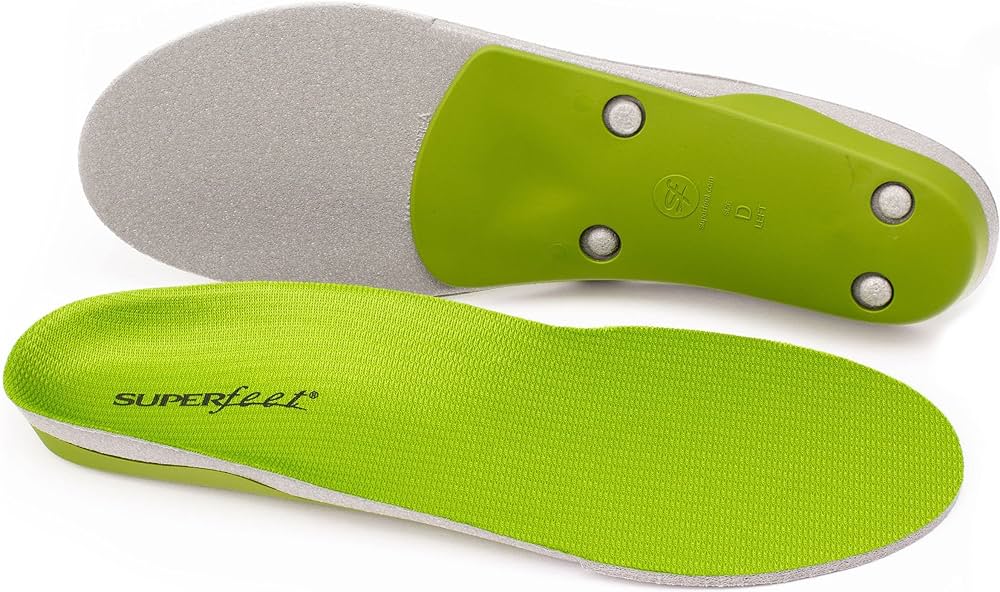
- Insole Brand 3: Powerstep Pinnacle Insoles
- Features and Benefits: Powerstep Pinnacle features a strong, medical-grade foot support encapsulated in a double-layer cushioning. They provide semi-rigid arch support and a deep heel cradle, ideal for high arches. The top fabric is designed to reduce friction and heat, maintaining foot comfort.
- Ideal For: Athletes and active individuals will find these insoles beneficial. They are also a good choice for everyday wear, offering a balance between support and cushioning.
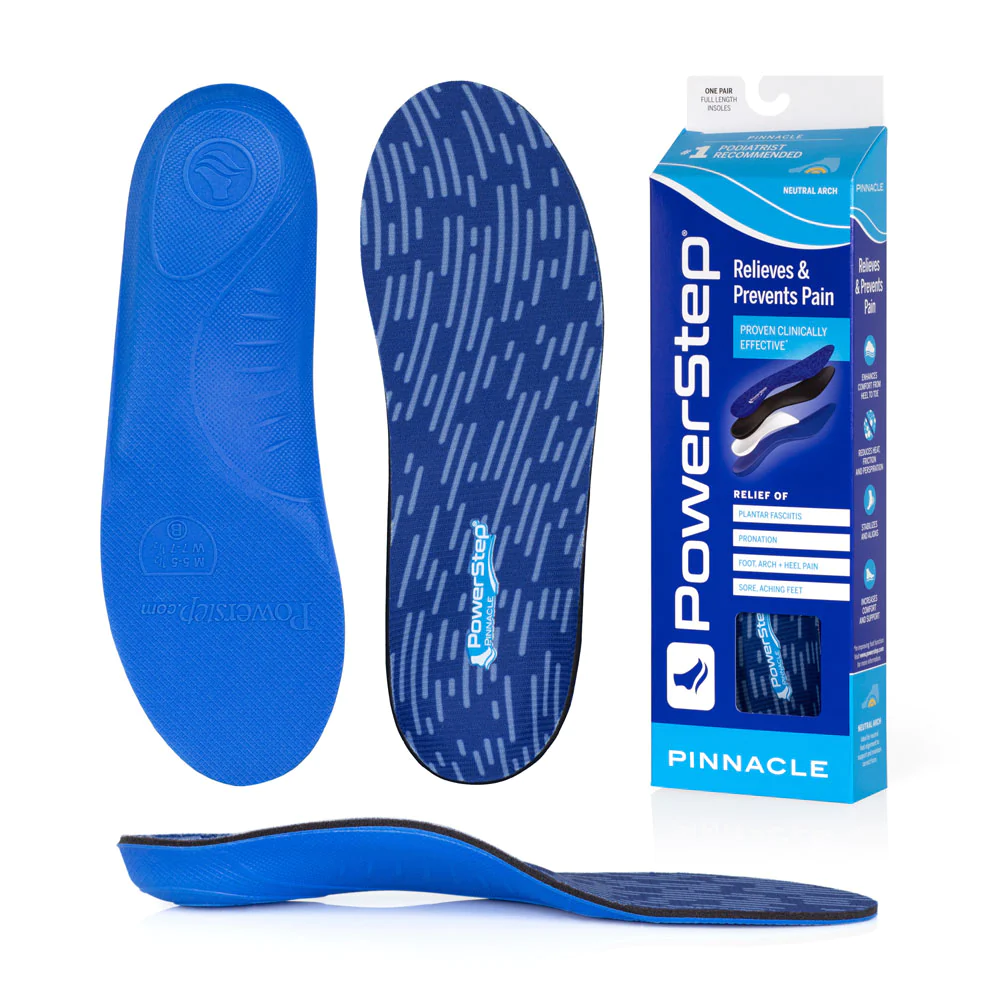
Each of these insoles offers unique features and benefits tailored to high arch support. It’s essential to consider personal preferences, the type of shoes you wear, and the specific activities you engage in when choosing the right insoles. Additionally, consulting with a foot care professional can provide further guidance tailored to individual needs.
User Experiences and Reviews
User experiences and reviews are a valuable source of information when selecting the best insoles for high arch support. Here’s a summary of what users typically report about high arch support insoles:
- Positive Feedback:
- Improved Comfort: Many users report a significant improvement in overall foot comfort. This is particularly true for those who stand or walk for extended periods.
- Reduction in Pain: Users with high arches often experience relief from foot pain, especially in the arch and heel areas, after using these insoles.
- Enhanced Stability: High arch support insoles are praised for improving stability and balance, which is beneficial for those with a tendency to overpronate.
- Better Shoe Fit: Some users note that these insoles help shoes fit better and feel more comfortable, filling the gap under the arch.
- Increased Endurance: Users involved in physical activities or sports often mention that the right insoles help them perform better and for longer durations without discomfort.
- Considerations and Complaints:
- Adjustment Period: A common observation is the need for an adjustment period. New insoles can feel unusual or uncomfortable during the initial days of use.
- Compatibility with Shoes: Some users find that certain insoles don’t fit well in all shoe types, especially in narrower or low-volume shoes.
- Durability Concerns: Occasionally, users report issues with the insoles wearing out quicker than expected, especially in the case of lower-quality brands.
- Cost: The price of high-quality insoles can be a concern for some, as they are often more expensive than regular insoles.
- Personal Preferences: There’s a subjective element to insoles’ comfort and support, and what works for one person might not work for another.
It’s important to consider these user experiences and reviews when selecting insoles. They provide real-world insights into the performance, advantages, and potential drawbacks of different insole options. However, personal preferences and individual foot characteristics play a significant role in determining the best choice for each person. Consulting with a foot care professional can also be helpful in making an informed decision.
Comparative Analysis
A comparative analysis between specialized insoles for high arch support and regular insoles can highlight the distinct advantages and necessities of using the appropriate type for specific foot needs. Here are some key differences:
- Arch Support:
- High Arch Insoles: These are specifically designed to support the heightened arch of the foot. They often have a more pronounced arch area to accommodate and provide targeted support to high arches, reducing stress on the arch and mitigating potential pain.
- Regular Insoles: Regular insoles generally offer a standard level of arch support, which may not be sufficient for high arches. They tend to focus more on general cushioning and are not tailored to the specific needs of high arches.
- Cushioning and Pressure Distribution:
- High Arch Insoles: They typically feature strategic cushioning, especially in the heel and forefoot areas, to evenly distribute pressure across the foot. This design helps to alleviate discomfort in high-pressure areas common in high-arched feet.
- Regular Insoles: While they do provide cushioning, it may not be adequately distributed to address the specific pressure points of high arches, potentially leading to discomfort or pain.
- Material and Structure:
- High Arch Insoles: These insoles often use more robust materials and a structured design to ensure lasting support and durability, crucial for the unique demands of high arches.
- Regular Insoles: The material and structure may be more focused on general comfort and are not always as durable or supportive as those designed for high arches.
- Fit and Shoe Compatibility:
- High Arch Insoles: Specialized insoles for high arches may require more room in shoes due to their raised arch design. This aspect is important to consider when fitting them into existing footwear.
- Regular Insoles: They are generally designed to fit easily into a wide range of shoe types without significantly altering the fit.
- Targeted Relief and Functionality:
- High Arch Insoles: These insoles are aimed at addressing specific issues related to high arches, such as instability, pronation problems, and concentrated pressure points.
- Regular Insoles: Their functionality is more generalized, focusing on basic comfort and support for a variety of foot types.
- Cost:
- High Arch Insoles: They can be more expensive due to their specialized design and materials.
- Regular Insoles: Generally, they are more affordable, but may not offer the necessary support for high arches.
In summary, while regular insoles provide basic cushioning and support, insoles designed for high arches offer targeted support and relief tailored to the specific needs of high-arched feet. Choosing the right type depends on individual foot structure and specific needs. For those with high arches, investing in specialized insoles can significantly improve comfort, reduce pain, and enhance overall foot health.
Usage Tips and Maintenance
Proper usage and maintenance of insoles are vital for maximizing their benefits, especially for those designed for high arch support. Here are some tips on how to use and take care of these insoles:
Usage Tips
- Proper Insertion:
- Ensure the insoles fit snugly in your shoes. Trim the edges if needed, following the guidelines provided by the manufacturer.
- Place the insole so that the arch support fits naturally under the arch of your foot.
- Gradual Introduction:
- Start by wearing the insoles for a few hours a day and gradually increase the duration. This helps your feet adjust to the new support.
- Align with Footwear:
- Use insoles in shoes that have enough depth and width to accommodate them comfortably. Avoid using them in shoes that are already tight.
- Activity-Specific Use:
- Consider the type of activity when choosing insoles. Some are designed for everyday wear, while others are tailored for sports or extensive walking.
- Listen to Your Feet:
- Pay attention to how your feet feel. If you experience discomfort or pain, consult a foot care professional.
Maintenance Tips
- Regular Cleaning:
- Clean the insoles regularly to maintain hygiene. Follow the cleaning instructions provided by the manufacturer, as some materials may require specific care.
- Air-Dry Thoroughly:
- After cleaning, let the insoles air-dry completely before placing them back in your shoes. Avoid direct heat sources like radiators.
- Odor Control:
- To manage odor, sprinkle baking soda on the insoles overnight and brush it off in the morning. There are also specialized sprays available for odor control.
- Rotate Between Pairs:
- If possible, rotate between two pairs of insoles to allow them to rest and recover, extending their lifespan.
- Regular Inspection:
- Check your insoles periodically for signs of wear and tear. Look for flattened arches, tears, or cracks.
- Replacement Schedule:
- Replace insoles as recommended by the manufacturer or at least once a year, depending on usage and wear.
By following these usage and maintenance tips, you can ensure that your high arch support insoles perform effectively, providing the necessary support and comfort for your feet. Regular care and attention also extend the life of your insoles, making them a worthwhile investment for your foot health.
WHERE TO BUY
Price Range and Value for Money
The price range and value for money of insoles for high arch support can vary significantly based on factors like brand, material quality, and specific design features. Understanding this range can help you make an informed decision that balances cost and effectiveness.
Price Range
- Budget Options:
- Price: Typically range from $10 to $30.
- Characteristics: These insoles offer basic arch support and are usually made from less durable materials. They might not provide as personalized a fit as more expensive options and may wear out more quickly.
- Best For: Casual wear, individuals who are trying arch supports for the first time, or those with mild discomfort.
- Mid-Range Options:
- Price: Generally fall between $30 to $60.
- Characteristics: These offer better arch support, more durable materials, and often come with additional features like enhanced cushioning or moisture-wicking fabrics.
- Best For: Regular use, those who have moderate arch-related discomfort, or for specific activities like running or hiking.
- Premium Choices:
- Price: Can be upwards of $60, with some going over $100.
- Characteristics: High-end insoles provide superior support and are often made from top-quality materials. They may offer advanced features like custom molding, enhanced alignment support, and superior durability.
- Best For: Individuals with significant foot pain or conditions, athletes, or those who require extensive daily use.
Value for Money
- Assessing Needs: The best value depends on your specific needs. If you have severe foot pain or specific medical conditions, investing in a higher-end insole can provide the necessary support and may be more cost-effective in the long run.
- Durability vs. Cost: Consider how long the insoles are likely to last. Cheaper insoles might need to be replaced more frequently, whereas more expensive ones could offer longer-lasting support and comfort.
- Activity-Specific Features: If you need insoles for specific activities like sports, investing in insoles designed for that activity might offer better value for money due to targeted support and durability.
- Trial Periods and Guarantees: Some manufacturers offer trial periods or money-back guarantees, which can be beneficial in finding the right fit without financial risk.
